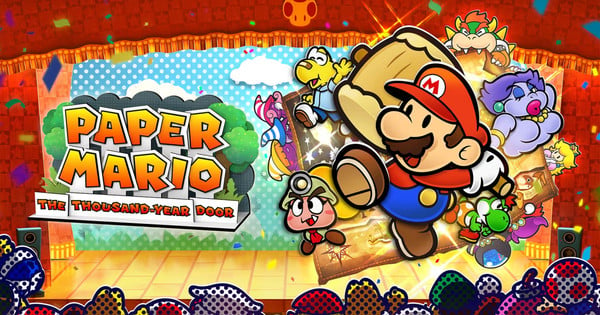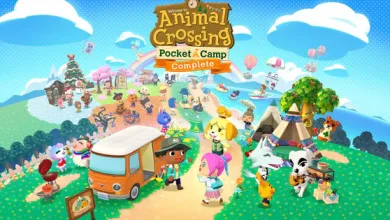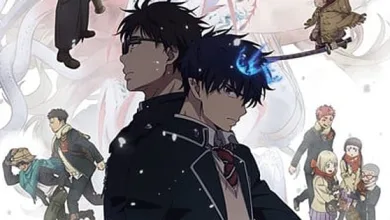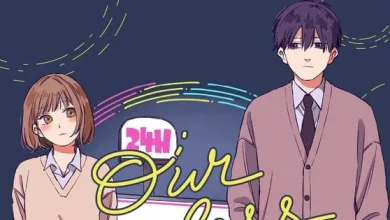Paper Mario: The Thousand-Year Door Video Game Review – Game Review

It’s nice when Nintendo surprises us with a remaster or re-release of one of their more difficult-to-obtain games. The original Paper Mario: The Thousand-Year Door for the Nintendo GameCube is a classic for many. However, since the game was never re-released, it’s also quite expensive and difficult to obtain. Here we have a from-the-ground-up remake of the original game for the Nintendo Switch, but does this beloved classic still hold up in a modern sense, or is that praise just nostalgia talking? I have not played the original GameCube release, but after getting the chance to sit down and play this game for the first time, I can see why it is still beloved even to this day.
The Thousand-Year Door is a turn-based RPG that uses familiar and new characters. The story is nothing overly complicated or compelling compared to most other RPGs out there. You don’t play a Paper Mario game to get the same level of world-building and social commentary that you would get from a Final Fantasy game. While some of the fun lore has some interesting implications, the overall world and story structure are incredibly simple. The game is divided into chapters with the goal of collecting Crystal Stars. You find a new companion in each chapter that gets added to your party, each of whom brings their unique abilities to the table and can be used both during combat and in the overworld. Collect all the stars, and you can open the titular Thousand-Year Door. It’s straightforward on paper, but everything in between the predictable moments makes The Thousand-Year Door so fun.
While the Paper Mario universe is technically separate from the mainline Mario games, a lot here pokes fun at the entire franchise. Returning characters like Mario, Peach, and Bowser aren’t reinvented, but everyone walks around with a “been there, done that” mentality. Peach comments about always being kidnapped, Bowser is just sort of here trying to find his place in a story where he doesn’t start as the main bad guy and everyone hypes up Mario like he’s some chosen one even though this is just another day for him. Even Luigi occasionally appears throughout the game, and a few jokes about how he is doing his separate adventure off-screen are thrown at his expense. Even if you’re a casual Mario fan with passing knowledge about the earlier games in the franchise, there’s a lot of dialogue and references here that are enough to put a smile on your face.
But it’s not all old characters, we have a bunch of new ones as well who you’ll be spending plenty of time with whether it’s the handful of companions that Mario comes across or the singular companions that will reappear alongside Princess Peach and Bowser. The rapport that everyone has for each other feels like a perfect blend of wholesomeness with a little bit of edge. Some characters don’t have a story and are just kind of along for the ride, like your first companion, Goombella; some will just invite themselves into your life for the sake of getting stronger, like Koops, while others will have genuinely heartfelt stories at the root of their inclusion like Vivian. Almost every character is just a little bit mean, with occasional insults and passive aggressiveness thrown around, but none of your companions ever come off as unlikable.
I appreciate the snappy dialogue making all of these turtles, ghosts and mushrooms feel like actual people. It feels like they have lives outside of just being companions to Mario in this game, which is something that even the most complicated RPGs struggle to establish. If the game isn’t making you smile with references or fourth wall breaks, it’s making you laugh with how direct and out-of-pocket some of these characters can be. There’s even some dialogue here that pushes the envelope for what you would expect in a Mario game, with the occasional sexual allusion or dirty joke thrown in there.
Granted, some things are different when you pair this game alongside the original The Thousand-Year Door English-language release. I have not combed through this game with a dialogue guide to see all the differences. Some things were corrected and added back into this remake, such as Vivian being transgender, a point altered in the English release on GameCube. However, it does seem like some edgier dialogue was changed to be a bit softened during the remake process, such as catcalling being replaced with just general aggressiveness. They seem like relatively minor things, but I know some people’s mileage may vary on that.
What shouldn’t be up for debate, though, is just how gorgeous this remake looks. Not only is this game in a much higher resolution than the original The Thousand-Year Door, but so many added details to this remake make the world feel way more alive. Despite the paper-like looks of the world, there’s this incredible sense of dimension and depth to everything. Nothing looks flat against the screen; you can see the shadows of some of the characters as they move, extra frames are added to give them a more fluid sense of motion, and the buildings look like something right out of a craft store. This beautiful sense of imagination is present, and it does help you appreciate how creative such a simple art design can be. Unfortunately, it’s a shame that this art direction is a little bit too ambitious for the Switch. There are moments where the frame rate dips, particularly when there are loads of enemies on screen, and it can get very distracting. I think it would’ve been worth scaling back on all of the added details for the sake of a smoother experience, but at least it’s not an issue during combat.
Yes, the turn-based combat from the original The Thousand-Year Door is back, and it falls into that camp of “simple to understand and difficult to master.” The foundation for the combat system is straightforward, with every character having designated attacks, access to items that can attack multiple enemies or inflict status buffs, the ability to reduce damage by guarding, and you’re ability to find badges that augment your abilities or give you access to special moves. Every fight takes place on an actual stage, complete with an audience that can throw things at you if you’re not being careful or help you, depending on how the tides are going. It’s simple, but there are a lot of little things to pay attention to, and almost every enemy has a distinct way the group will need to defeat them. Some enemies can’t be jumped on, but others must be jumped on before you can damage them. I will say that the simplicity of the combat can make the opening hours a bit boring, as enemies are very easy to blaze through. It took a long time before I saw my first on-screen death.
But when we get a late game, you’ll have to be more selective about what moves and badges you utilize during combat. If you pay attention, the combat shouldn’t give you too much trouble, but there are many different party combinations and ways of getting the most out of your combat abilities. Plus, even if the presentation and combat feel simple, the music embeds everything with a sense of epicness and fun. The soundtrack is dynamic, shifting, and changing depending on how the battle is going. Never has having two pieces of paper slamming into each other felt more epic. Then, outside combat, the overworld themes are an absolute joy to listen to. Even when I grind, the soundtrack makes me feel like I’m accomplishing something.
After putting two dozen hours into the game, I still feel like I’ve only scratched the surface, but I think that’s the mark of a good RPG. While you want to feel like you’re going on a big, fun adventure where you gradually grow over time, you also want to appreciate all of the little things that go into making this world feel lived in. It’s not perfect, but this remake was never going to live up to any perfect standard, given the legacy of what it is trying to recreate. Looking at it strictly on its own now and given that purchasing this game at full price is arguably cheaper than getting everything necessary to play the original legally, I think this is a perfect way to experience The Thousand-Year Door for yourself. This is a colorful, humorous, and overall engaging world that sucks you in. Power jump into it when you get the chance!
Source link
#Paper #Mario #ThousandYear #Door #Video #Game #Review #Game #Review



